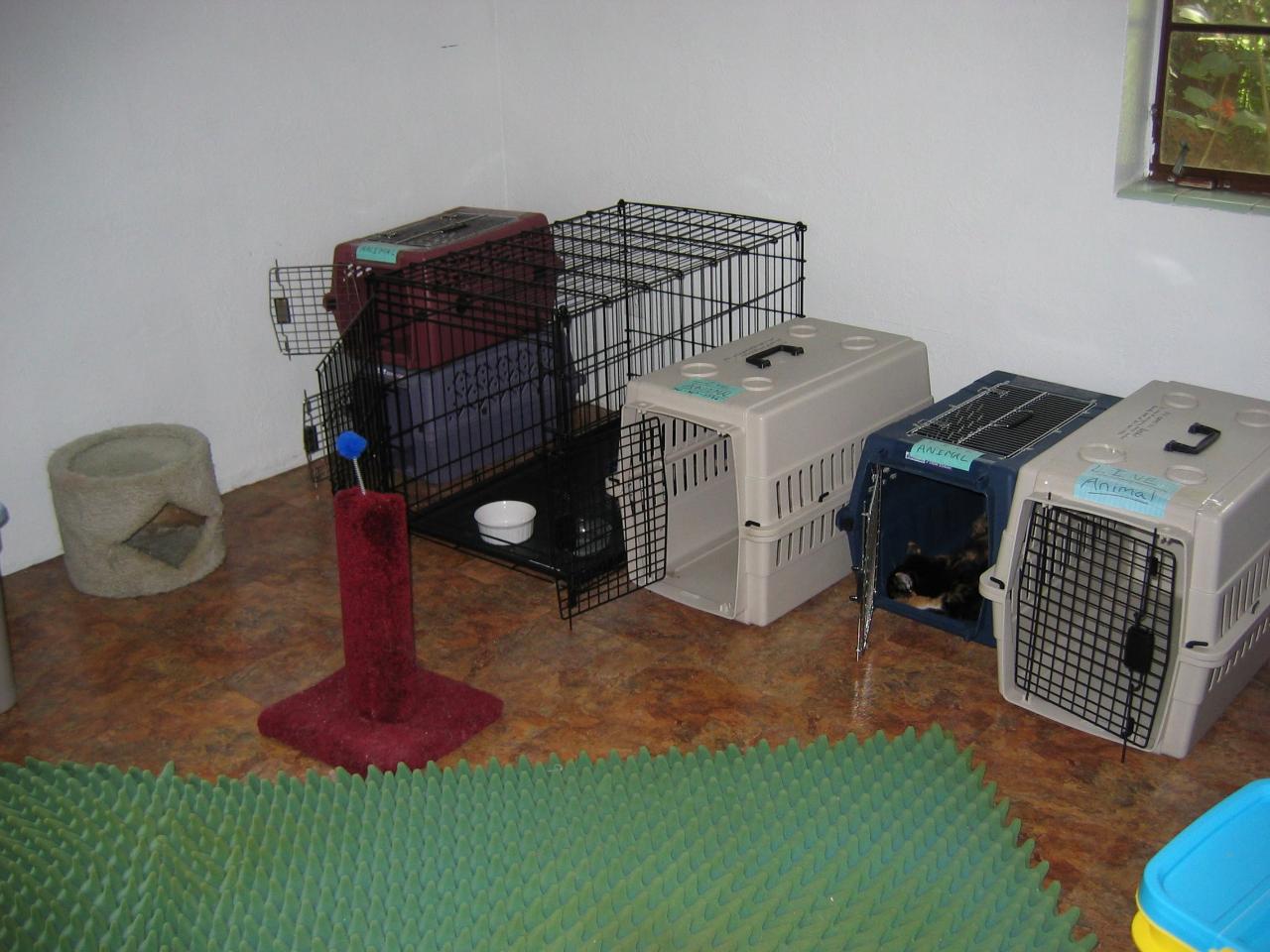Caring for Aging Pets
Whether you welcome a young, adult, or senior pet into your life, they all ideally end up ‘senior’ eventually. With advancing age, your pet’s needs and preferences will change.
There are lots of well-written articles about caring for elderly cats and dogs, as well as when to make the most difficult decision: when to let them go. Here’s our wisdom to share..
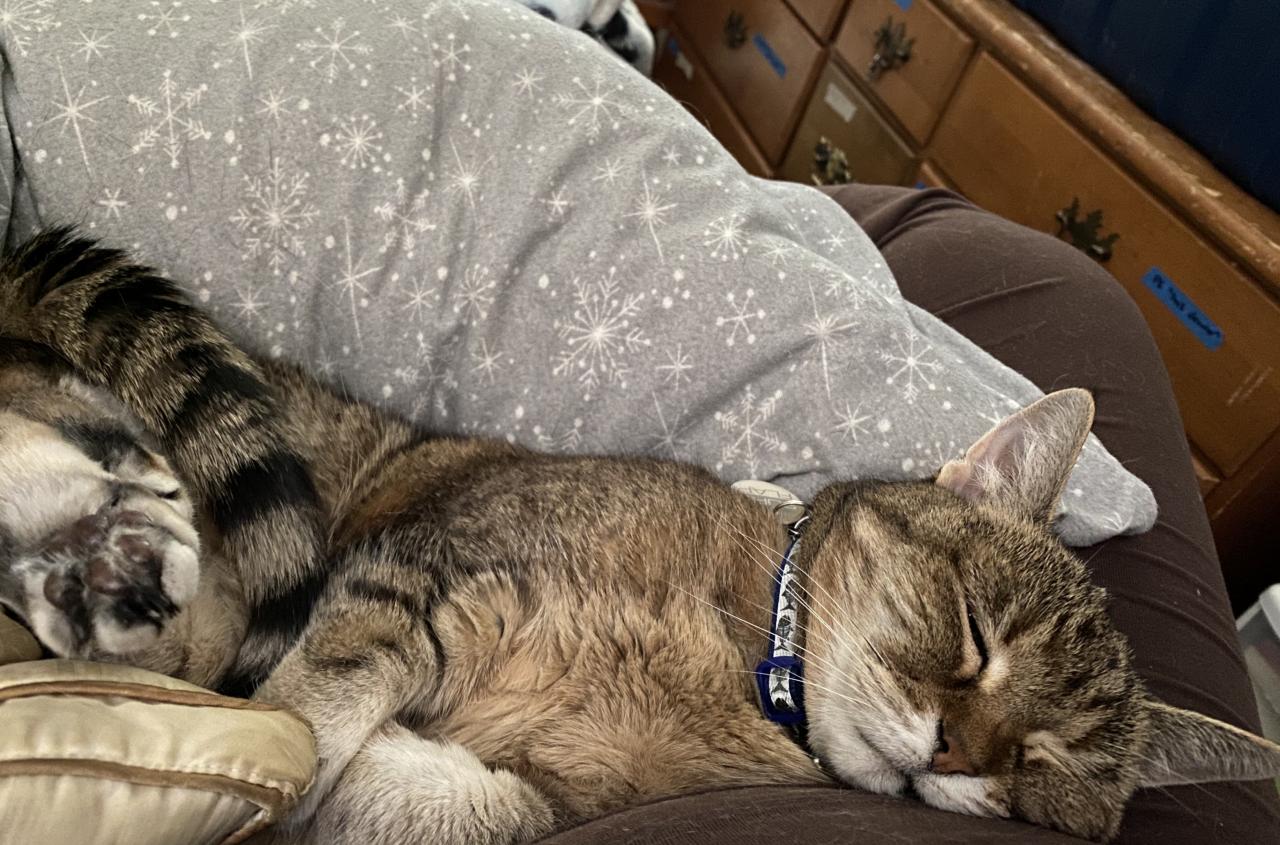
Increased Veterinary Care and Costs
We were very fortunate to have mostly-healthy cats and dogs for many years. We did vaccines and yearly exams, and occasionally a dental cleaning, but had few worries between. The first senior kitty to show signs of aging did so by losing weight suddenly; a comprehensive blood work panel caught hyperthyroidism. His disease progressed, and by the end of his life (19yo), he was seeing his regular veterinarian, an integrative animal vet, and an internal medicine specialist to manage his care. He had non-emergency appointments approximately every three months, and that is part of why he lived for 4 years after his initial diagnosis, when the average patient lives only 6 months after diagnosis. While he needed to take oral and subcutaneous medications and supportive supplements to stay healthier, he didn’t mind those a bit and would happily queue up for cat treats and meds twice a day. While we expected to pay more for senior critter care, we did not anticipate the level of neediness accurately. The specialist clinics and specialty veterinarians are often more expensive per visit, but they can save you a lot of time, money in diagnostics, and heartaches in decision making - well worth it in the long run. Don’t be afraid to ask your primary veterinarian to refer you to specialists if something new comes along - senior pets require both diligence and delicacy in balancing treatments. Plan and budget accordingly as pet insurance often lapses (e.g. many policies cap cats at 13yo) as pets advance in age.
‘Alternative therapies’ are sometimes key!
It’s easy to get locked in to one idea of how medical care ‘should be’, but we found that being open to new treatment options made a huge difference in the quality of life for our senior critters. Our senior cats (>19yo) benefited tremendously from Assisi loop treatments for arthritis and pain management. Our large breed (75 lb) senior dog (14yo) had an incredibly positive experience with chiropractic care, which allowed him to move much more freely and be more active than we could have imagined without it. Glucosamine injections are much more accessible for pets now, and glucosamine (orally and subcutaneously) has been used in human joint therapy with few side effects and many demonstrated benefits. Standard Process makes high quality supplements to support many organ systems in cats, dogs, and humans - these are in a beef base, so many critters gobble them up happily. When complex health issues come calling, answer with a comprehensive whole-organism support plan.
Dietary Needs Change
While some pets continue to thrive on an adult or senior diet, many do not. We went through a myriad of options to keep our senior cats and dogs eating well and maintaining good body condition. One important thing to discuss with your veterinarian is expectations and priorities. As our senior dog became less active, and his kidney disease progressed, our primary concerns shifted to prioritize his kidney health. Our senior dog refused to eat the prescription kidney diets from Royal Canin or Science Diet, but we found Darwin’s raw kidney diet which was a great solution for him. For our senior kitty with hyperthyroidism, food aversion became public enemy #1, and we constantly changed his diet - every 6-8 hrs we opened a new brand/flavor of food. It was not easy, but it kept him eating more regularly and his blood work showed no huge penalty to his kidney health when he came off the prescription kidney diet. Our veterinarian also calculated some homemade diets for us using some nutritional resources available to vets, and that expanded the types of proteins we could offer him (egg, rat, mouse, different fishes, bison, ostrich, etc.) by using our local butcher and reptile supply shop. It may sound silly, but it made a big difference to him in his final years with us.
In addition to what your pet will eat, it’s important to consider how they eat as seniors. Many senior dogs prefer raised feeding platforms which can help alleviate stress and strain on arthritic joints. Some dogs and cats also benefit from slow-feeders, to prevent them from swallowing air and getting sick or eating too quickly causing digestive distress ( aka ‘scarf and barf’).
For smaller dogs and most cats, a SureFeed can help ensure special diets end up in the correct bellies.
Probiotic supplements, enzyme supplements, and ‘easy to digest’ foods can all help your senior pet get the most nutrition out of the calories they ingest, so definitely include those options in your chat with your veterinarian about nutrition.
Water is Life
Drinking enough water as a senior can be a challenge, and even human seniors often struggle with dehydration. One of the biggest successes we’ve had in tackling this has been to place running fountains in every room of the house - plastic, ceramic, and metal to give the most drinking options. Even with filtration, fountains need to be cleaned thoroughly surprisingly frequently (daily, sometimes more often) to prevent gunky buildup and bacterial growth. Pumps in most fountains are replaceable, but take a peek before you click ‘buy’ to make sure, since replacing a $3 part is much preferable to replacing an entire unit! We also have standing water available at all times from a variety of bowl types. The more opportunities to drink, the better.
Fitness Capability Changes
Some senior pets are excellent at regulating their activity levels and will taper off intensive exercise but still engage in gentle exercises, others need to be restricted from strains, sprains and bruises. Encouraging movement is important, but be realistic about the activities you choose. For our senior dog, at around 12yo, we decided his enjoyment in adventuring was worth any side effects of medicating him for his arthritis, so (with the guidance of our veterinarian) we gave him baby aspirin before and after any long walks or hikes to ensure he could participate. When his kidney values made aspirin an unsafe choice, by 14yo, we switched to “car adventures” where we would drive to different parks, and thus encourage him to walk less, but still get to enjoy an outing with new sights, smells, sounds, and lots of attention. Now more than ever, there are great options to help senior dogs, including courses which are devoted to stretching and strengthening for senior dogs, underwater treadmills for rehabilitation, dog swimming facilities, and more.
For senior cats, using toys, treats, affection, or even a feeding routine to help them do a little walking and a little obstacle navigation can help keep their minds and bodies engaged. Try to use the activities and places they enjoy most to lure them into doing what’s good for them.
Gentle massage and manipulation can be very beneficial for senior pets, but is best done with supervision at first to prevent injuries.
Accessibility Concerns
Keeping active also means staying safe and preventing injury. For senior cats and dogs, pet stairs or ramps help tremendously to access higher places (the bed, the car, that one dresser they love to sleep on all day). For our larger senior dog (75 lb), even ramps were too hard to navigate alone, so we got him a Help ‘em Up harness. It is a spectacularly well-designed device that made lifting him simple and balanced, which was much easier on all of us.
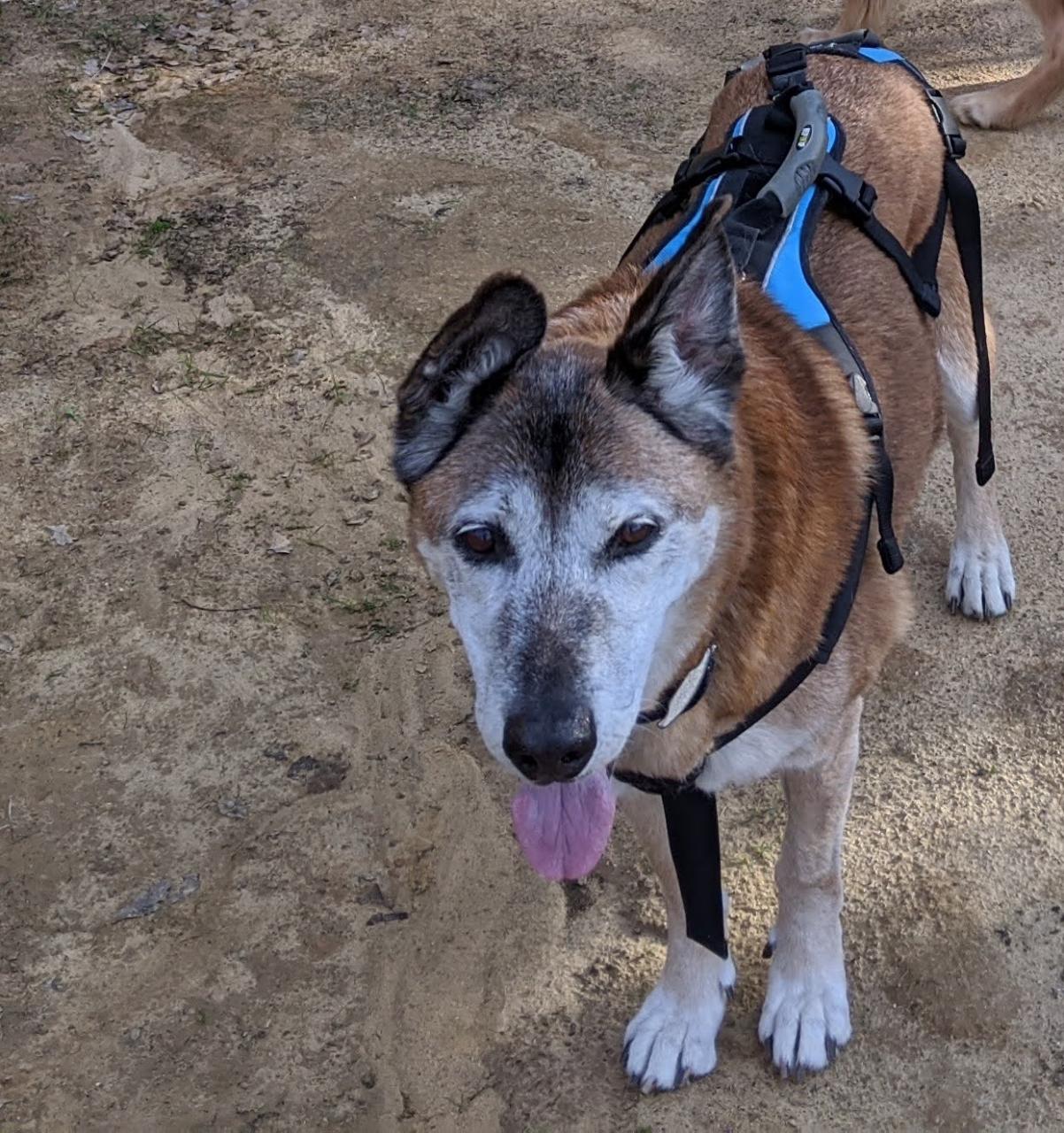
If you have an overly-brave senior cat, be sure to place “crash pads” around any locations they jump, just in case. We’ve found old sleeping bags, dog beds, and pillows are the simplest “crash pad” options. If your cat is really too weak or unstable to be leaping from place to place, you can discourage them from jumping by taping partially inflated balloons along the edge of dressers or other furniture and providing stairs or ramps that connect their favorite spots in safer ways.
Slips and falls also become more serious in elderly pets, so be sure to provide stable flooring. We purchased Ruggable rugs to help prevent slippery tile floors from causing our dogs to fall and we have been delighted by their no-slip stability, selection of sizes, and overall quality.
Safe Sleeping Spots
We cover all the cats’ favorite ‘nesting’ spots in towels that get rotated regularly - this helps us keep tabs on any accidents (vomit/urine/feces/blood) that might occur there while providing a safe, clean resting place for the senior kitties. For cat or dog beds that are more difficult to launder, we place unscented puppy pee pads inside/on top, under a towel or cushion, to help keep the beds clean and sanitary. We’ve also found that waterproof mattress covers made for cribs are a great fit for many dog beds. This makes cleaning up accidents (or just dirt) a lot simpler, too.
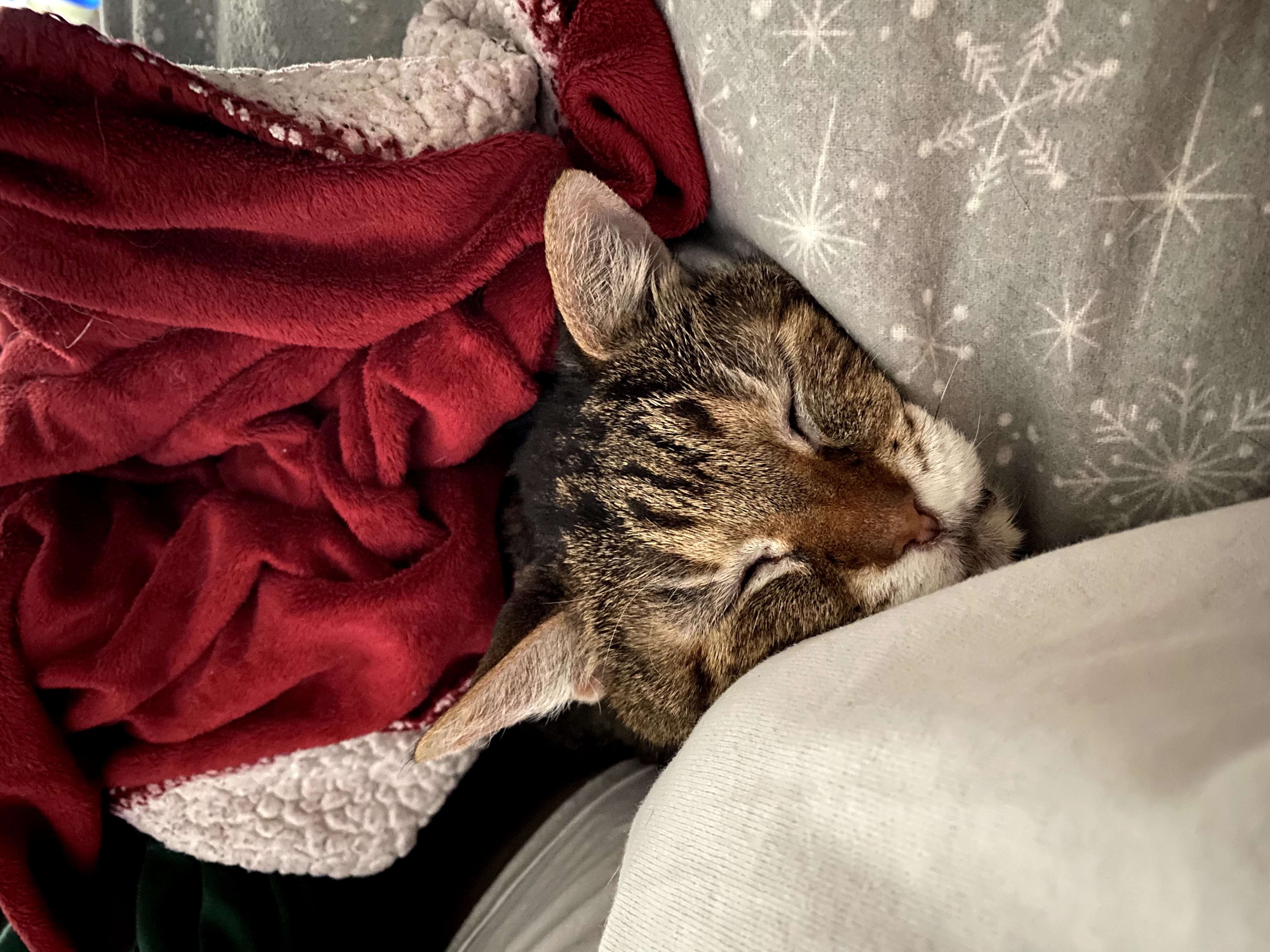
Hormones in senior pets aren’t always as reliable, and this can make it easier for senior pets to be thermally stressed. Providing pet-safe heating pads and cooling zones with cooling beds, fans, and/or raised beds can let your pet choose the right temperature at the right time.
An elevated cat bed (window- or wall-mounted) or a ‘pod’ style bed can also offer your senior kitty a quiet place to get away from younger critters in your home. Senior dogs may prefer a crate with a cushion, fan, etc, to give them a more private, safe space.

Cat ‘nests’ certainly don’t need to be fancy to be loved - a nice laundry basket with a few pillows, blankets, or towels is often a senior kitty’s preferred sleeping spot. Be sure the basket is heavy enough on the bottom so that it will not tip over easily if a senior kitty ungracefully enters or exits. We added a heating mat from K&H Pet Products to the basket and it became quite a popular napping hub.
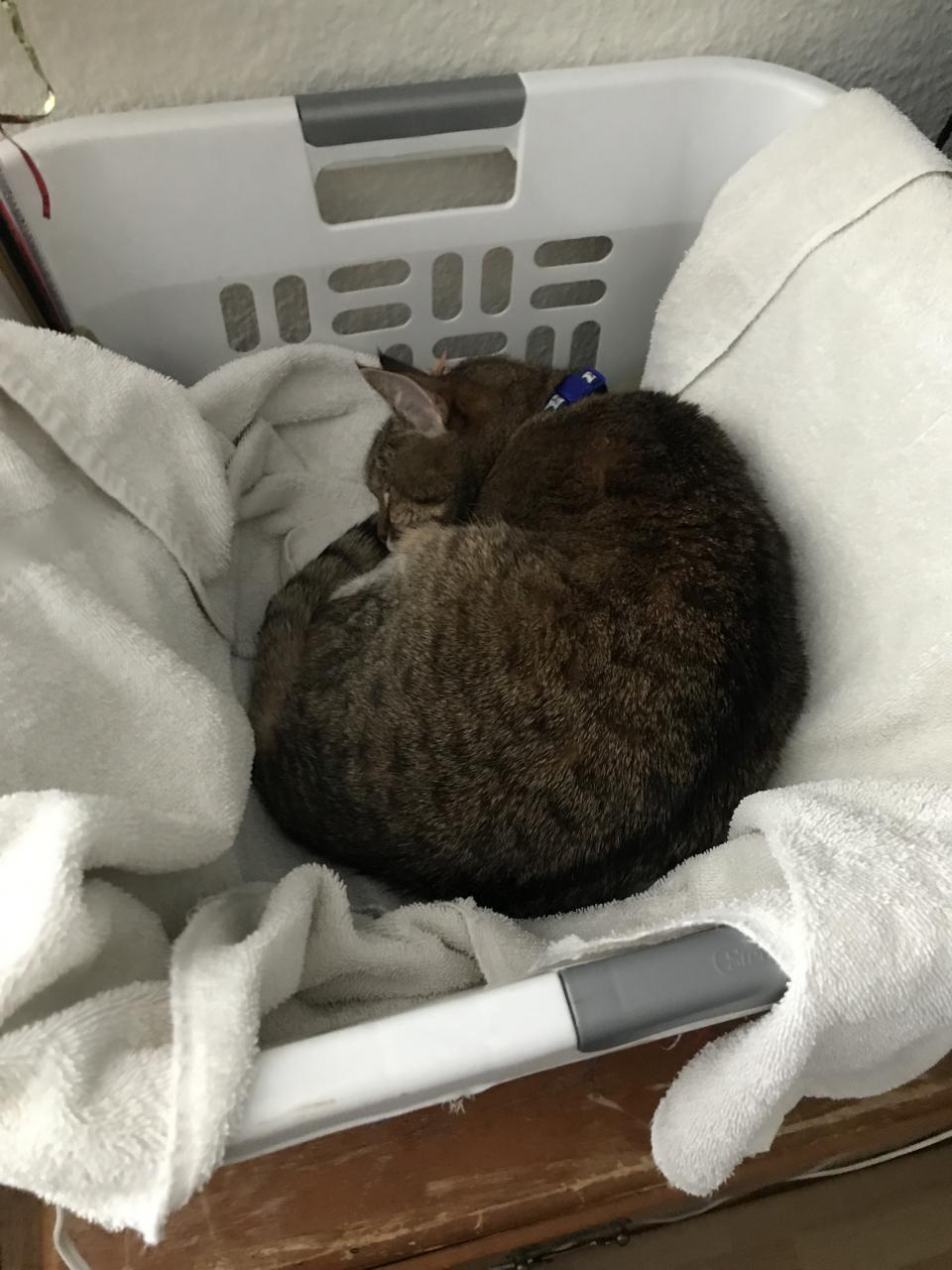
For senior dogs, orthopedic or raised beds can help take stress off of arthritic joints and provide a much more restorative slumber, but be sure to note where your dog prefers to nap (warmer or colder) before placing beds.

Potty Time
Accessibility issues also abound when senior cats and dogs need assistance urinating or defecating. Dogs may need a low-step-through doggie door or an ‘emergency’ pee pad near the door (or absorbent, washable bedding) since they may have less warning about when they need to relieve themselves. Pets who become regularly incontinent can often be helped by doggie diapers which now come in a variety of styles, colors, and sizes.
While there are many litter box options on the market, there are very few with low-profile entries to help arthritic kitties continue to enter and exit a litter box safely. Our most arthritic cat (20yo) had a few bad experiences falling inside the litter box in an attempt to enter or exit, and so he started relieving himself just outside of the box. We built a lower-entry box (by modifying a plastic storage bin) and also added unscented, reusable puppy pee pads around the litter box area. It’s simple enough to clean these pads if he doesn’t make it into the box, and it helps keep him from tracking through urine or feces or slipping and falling into those accidents. Box placement may also need adjusting, since arthritis can shrink a cat’s comfort zone significantly.
Grooming
Senior pets need more assistance keeping clean, too.
Oral Health
Dental cleaning and tooth extractions can make huge improvements in your senior pet’s quality of life, so having regular checkups and dental exams is imperative. Often dental extractions sound scary to us, but the difference in how comfortable your dog or cat feels after the painful tooth/teeth is/are removed is remarkable. At home, you can help keep your pet’s oral healthy by feeding a quality diet, offering tough chews (raw, frozen bones) to help scrape off plaque, and brushing their teeth (if possible), but some of it will come down to the luck of their genetics.
Daily Upkeep
Keeping a ready supply of baby wipes, Q-tips, cotton balls, cotton rags, brushes, grooming mitts, and extremely mild, unscented pet shampoo will help you tackle whatever messes may come your way. Be sure to check senior pets regularly to ensure their skin is clean and dry, with no matting or rough patches. Particularly for cats, grooming activities become much harder with age, and they may require daily brushing, and even trimming or shaving of difficult areas.
Nails
For both senior dogs and cats, nail trimming is extremely important. Overly long nails on senior cats can get snagged on carpet, cloth, or clothing and cause twists, sprains, strains, and breaks. Cats normally pull off old nail casings when they groom themselves or scratch on rough surfaces, but they may not engage in those activities with enough frequency as they age, so you may notice senior cats need help keeping nail beds clean and free of extra bits of nail and debris. Along these lines, if you notice cat litter caked in between paws often, you may need to consider a non-clumping litter or wash paws daily to prevent infection. For senior dogs, overly long nails can cause orthopedic issues by making dogs change their gait to prevent ‘stubbing their toes’ on the ground with their long nails. One of the best things you can do for a senior dog’s mobility is to keep nails short and paw fur clipped to allow the pad to make full contact with the ground and keep them walking normally.
Getting Home Again
It’s sad to say, but many senior pets get lost and have trouble finding their way back home. Between a loss of their senses (hearing, sight, smell) and a higher rate of medical issues (arthritis, memory loss, seizures, increased thirst, sensitivity to environmental exposure, etc.), it can be a big task to get home without some help. Having an identification tag and collar on your pet at all times is always important, but consider adding a Medical Alert tag listing any big medical issues (e.g. “has seizures”) or routine medications (e.g. “meds twice daily for hyperthyroidism”) in case the escapee needs care or medication before you can be reunited. Most people who find and care for lost pets want to do the right thing, so providing extra information can help make everyone’s ‘unplanned day of adventure’ a bit simpler. If your pet is microchipped, be sure to register it and keep it up-to-date, too.
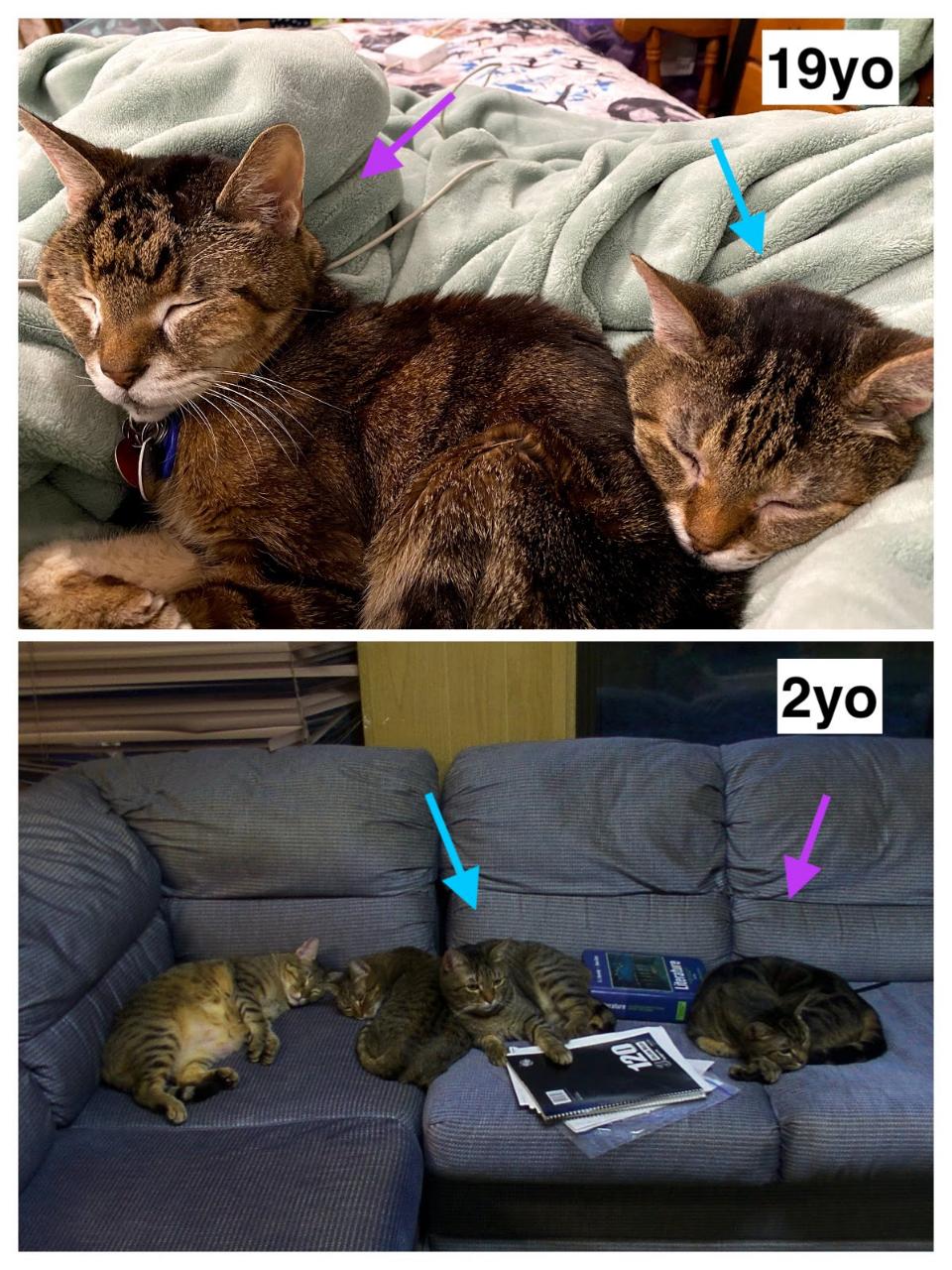
Human-Emergency Plans
Human-Medical Emergencies
If you have a pet at home who requires medications, it’s important to have an emergency contact who knows how to provide care in case you are too sick or you get injured unexpectedly. You can print a wallet-sized card with your emergency contact’s name and number and a note that your pet requires medications (along with your vet’s info) to help first responders/social workers get the right folks involved. Some emergency vet hospitals will also let you designate a pet medical liaison (like a dog walker or pet sitter) in case your pet is injured or ill and you are not around to make decisions. Having emergency contacts, pet identification and pet medical information listed on pet crates can be extremely helpful if your pet is in a vehicle during an accident, too.
Particularly for folks living far from family, it is wise to create a Last Will and Testament that includes your pets (young and old) should your immediate family not be interested in or able to care for them.
Evacuation
Evacuating with a pet has become simpler since the US passed the PETS Act in 2006, but it is still very stressful. The CDC has a good outline of what to prepare early in order to make evacuation less hectic. We recommend keeping digital veterinary records on a cloud-based service (Evernote, Google Drive, etc) so that they are easy to access, but a physical copy of your proof of vaccination and ownership should be in any disaster preparedness kit for use when cell towers and internet may be down.
Have a plan on ‘what to bring’ if you have 5 min warning, 15 min, 60 min, and 12 hr, and practice with all members of your house. Living far from flood zones and fire risks is no excuse, as chemical spills can happen almost anywhere else. Preparation saves time, which saves lives.
